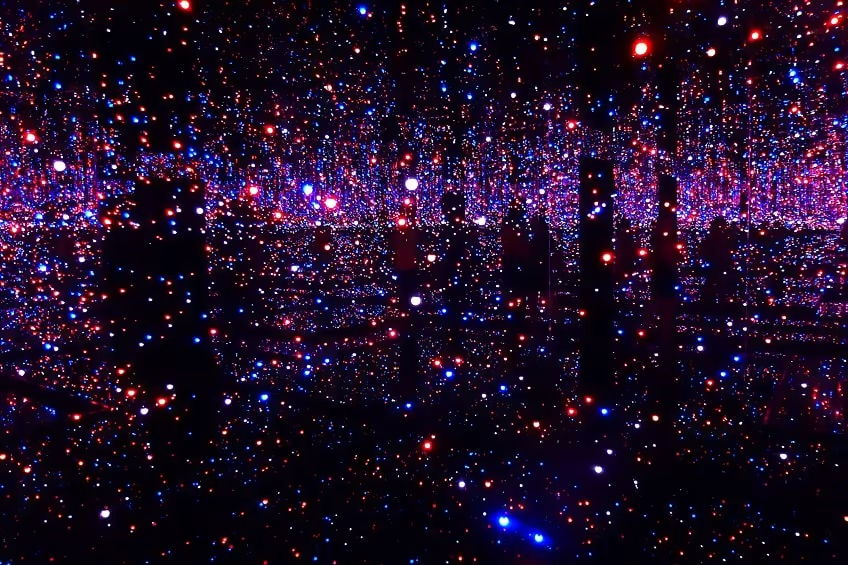Space in Art – Discover Important Space in Art Examples
Space is one of the most overlooked art elements in art yet it is also one that helps bring about balance, depth, and aids many other elements of an artwork to make it whole. This article will take you through space as an element of art and help you answer questions such as “what is space in art?” through the different space art examples.
The Elements of Art: Space
In a general sense, space is primarily understood as the unoccupied area of artwork, including the areas of an artwork that are around an object. Space as an element of art can be applied in different ways to achieve different visual outcomes. For a quick refresher, here is a summary table of the seven elements of art.
| Art Element | Definition |
| Space in art | Space consists of two defining attributes: negative and positive space. It can be understood as the areas around an object within an artwork. |
| Shape in art | Shape is understood by its limits defined by the presence of width and height used to create both three- and two-dimensional objects. |
| Value in art | Value refers to both the darkness and lightness of a hue and can carry other references to value in terms of economy, social status, and political contexts. |
| Color in art | Color is understood in terms of three attributes: hue, value, and intensity. |
| Form in art | A form is defined by the presence of height, width, and depth. A form can also contain an enclosed volume defined by two-dimensional features that merge to form a three-dimensional object. |
| Line in art | Line is defined as the trajectory that is formed between two points, located at a distance. Lines can differ according to width, length, and shape. |
| Texture in art | Texture alludes to the tactile sense evoked by a visual stimulus that aims to mimic the surface or material of another object. Texture can be created using varied shades of color, value, lines, and shapes. |
What Is the Definition of Space in Art?
What is space in art? The definition of space in art starts with space being one of the seven elements of art. Space is an element that can either make or break the visual aesthetic of an artwork. Space can be both negative and positive and is often easily understood by viewing two-dimensional artworks. By employing certain techniques of illusion, many artists have also successfully replicated the illusion of space in paintings and drawings.
Frank Lloyd Wright, an American architect also once stated that “space is the breath of art”.
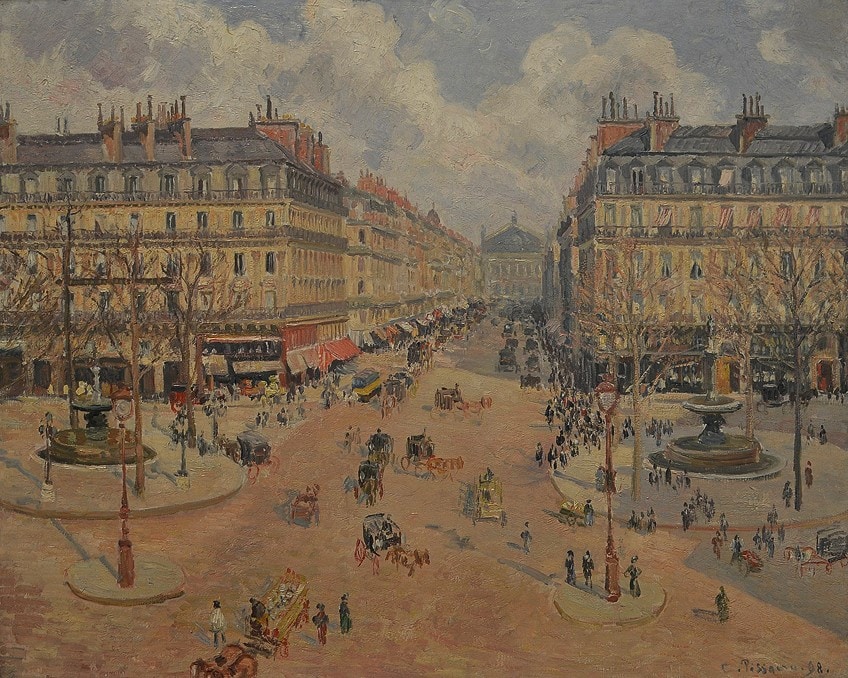 Avenue de l’Opéra: Morning Sunshine (1898) by Camille Pissarro, located in the Philadelphia Museum of Art in Pennsylvania, United States; Camille Pissarro, Public domain, via Wikimedia Commons
Avenue de l’Opéra: Morning Sunshine (1898) by Camille Pissarro, located in the Philadelphia Museum of Art in Pennsylvania, United States; Camille Pissarro, Public domain, via Wikimedia Commons
This means that space is unique as an art element since it is the only one out of the seven elements of art that can be found in almost any artwork. The illusion of space also works hand-in-hand with perspective techniques and the positioning of subjects in the frontal and background planes of an artwork. It can be said that space is thus linked to the placement of objects and can also be alluded to in three-dimensional artworks through the placement of objects in an installation or earthwork sculpture.
Below, we will delve into the two different types of space as seen in art along with space in art examples.
Positive Space
What is positive space? What defines a space as positive? And what is positive space used for? These are all questions you may have when encountering positive space. Positive space is understood as the areas of an artwork that are enclosed by the main subject or objects in the artwork.
Simply put, positive space is the area that is “filled-in” or occupied.
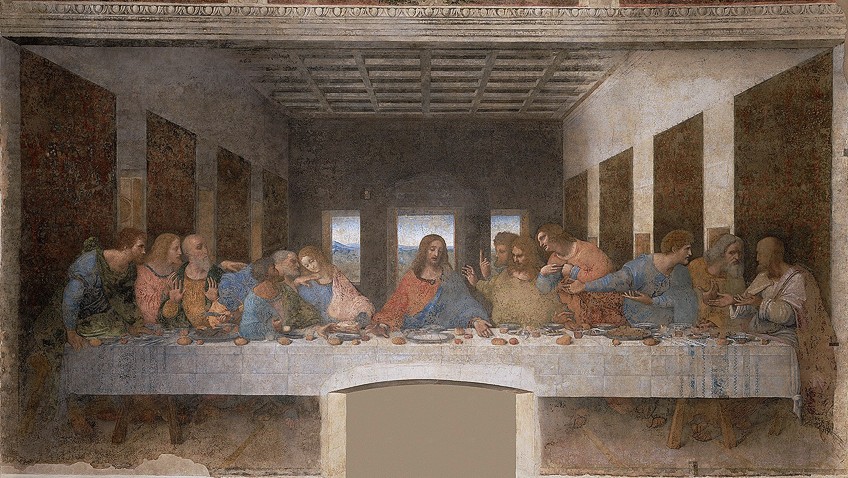
Negative Space
Negative space is understood as the “empty space” or the unoccupied areas of an artwork that contain no objects. Space is devoid of color and thus positive and negative space, which is often compared to light and dark, is not applicable.
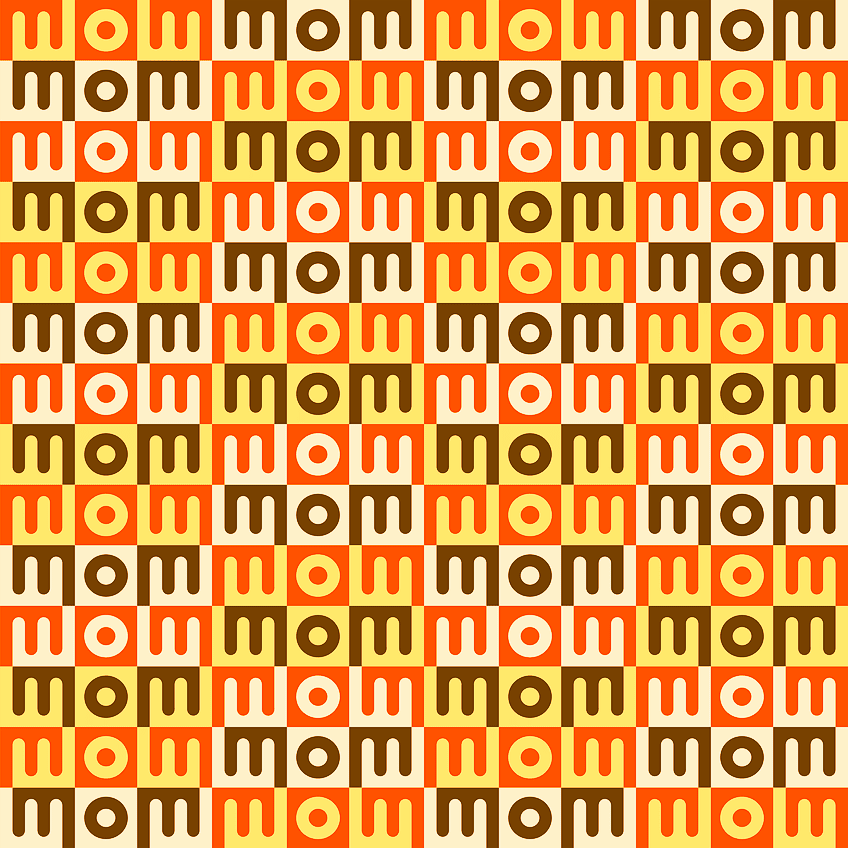
The Importance of Space
Space is crucial for many reasons but none more so than achieving a sense of balance in an artwork regarding the composition of an artwork. A composition can include more of each type of space (positive or negative) and yet become an unsuccessful artwork in terms of aesthetics due to a lack of the proper use of space.
If an artwork contains too much positive space, meaning too many objects, the artwork can appear too cluttered and termed “messy”.
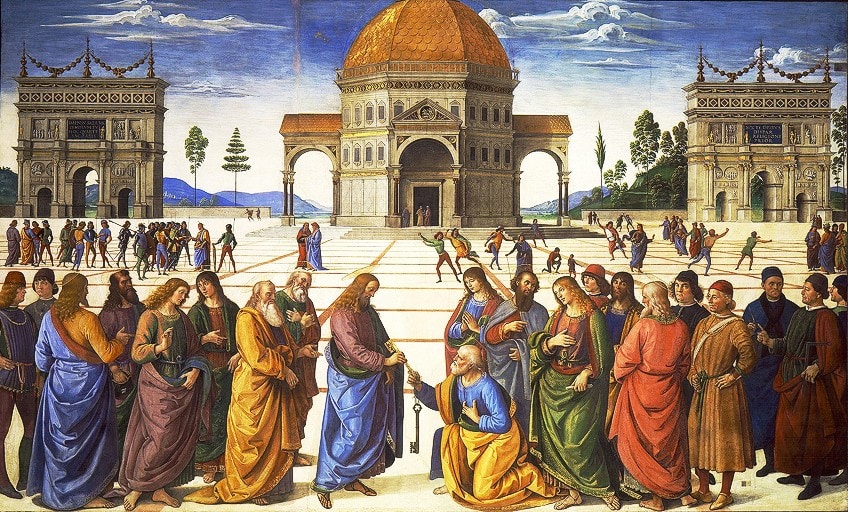
While many artworks can depict a busy scene, artists who excel are aware of the tactics used to ensure they use negative space to the artwork’s advantage. The advantage referred to here is focusing and highlighting an aspect of an artwork, space can be employed in multiple ways. Below are just a few ways that space can be manipulated, often in conjunction with other art elements and techniques.
Space in Installation
Installation art can be understood as a form of sculpture art that makes use of objects in a physical three-dimensional composition to create an installation or ensemble. Installations, as seen in Urs Fischer’s 2007 installation You at a New York gallery, involved the disruption of space into the ground as opposed to artists who would usually take to the space above the ground to disrupt space.
Fischer’s installation consisted of a large area of the floor that was dug out to create a void of dirt, which made up the installation.
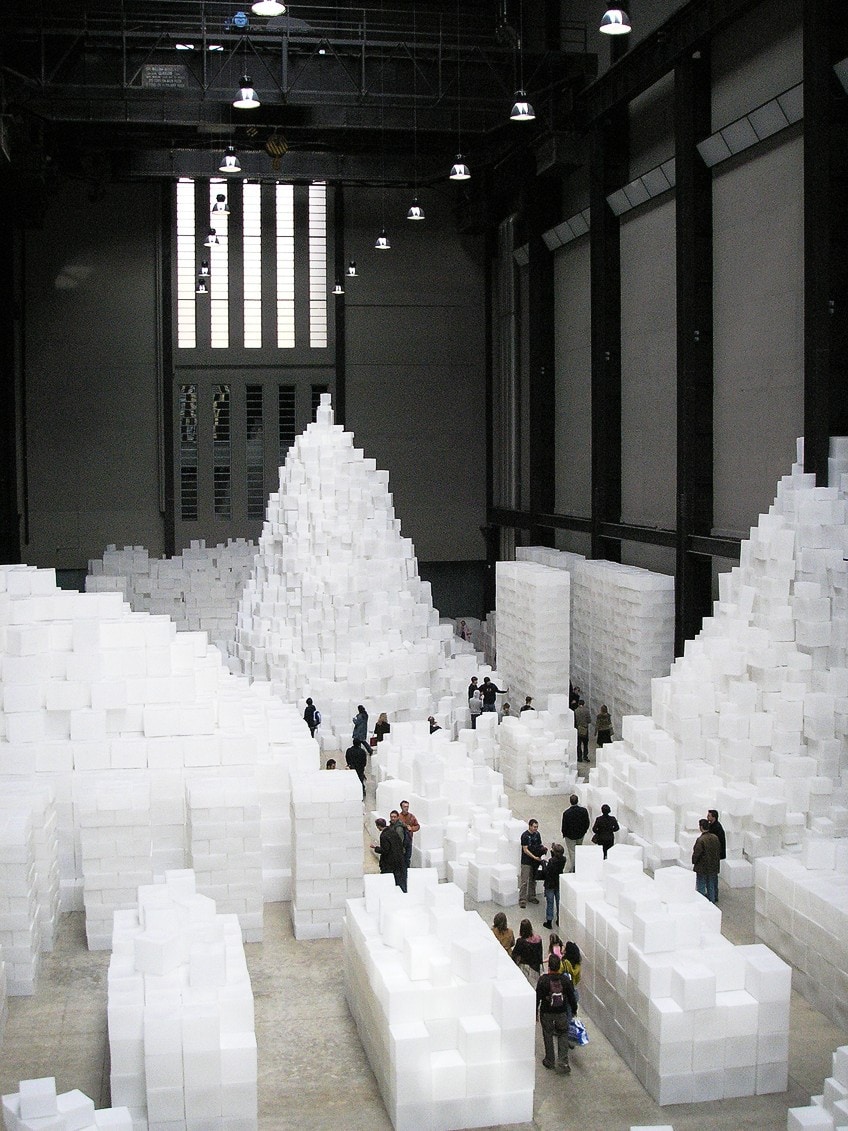
The disruption of space in installation usually occurs in the air or is seen as negative space in the physical world. Artists who make use of negative space include Doris Salcedo, seen in Noviembre 6 y 7 (2002), and Cornelia Parker, seen in her 1991 installation, Cold Dark Matter: An Exploded View. Parker inserts positive space by filling the room, an otherwise negative space, with objects to transform the environment into a work of art.
The essence of installation art is the environment and the art itself cannot be witnessed without the distinction between negative and positive space.
Space in Perspective
Creating a sense of perspective aids the spatial “correctness” of an artwork. Artists can render the illusion of depth in an environment through the use of linear perspective to suggest a level of three-dimensionality. This is achieved by ensuring that a few lines meet at a single vanishing point (or more).
The vanishing point is what makes the artwork appear to meet an “end” and helps put into focus the subject(s) of an artwork.

Perspective and space are best seen in examples of landscape paintings and photographic works, which are quite technical in the positioning of subjects in line with the horizon line. By adjusting the horizontal line higher or lower, the artist decides how much or how less negative space they want in the artwork.
Different ratios of negative to positive space and vice versa offer different experiences.
The more negative space there is, the more the viewer will feel as though they can enter the scene. The more positive space there is in the artwork, the less space there is for the viewer to observe the scene, and the focus is placed on minute details.
Space and Illusion
Also known as Op Art, or optical illusion art, space can be constructed by employing the art of optical illusion. Optical illusions can be achieved in different ways but one such example of the illusion of space can be seen in the work of Yayoi Kusama and her Infinity Mirror Rooms.
This brings us to the idea that space, as consumed by the environment, makes for an immersive experience.
In Kusama’s Infinity Mirror Rooms, she makes use of mirrors to reflect certain images and photographs so that it presents the illusion of space. We can commonly pinpoint space in illusion art as being constructed using perspective techniques and color but using reflections create a direct “mirror image” into the illusion of an extended space.
Kusama’s large-scale installations also make use of light to truly engulf the viewer in the experience.
Space in Art Examples
The balance of negative and positive space can greatly influence the success of an artwork. Below, we have selected some artworks that will help you to dive deeper into the art element of space whilst showing you the different ways that space can be employed in art.
Geese Over a Beach (c. 18th century) by Maruyama Ōkyo
| Artist Name | Maruyama Ōkyo (1733 – 1795) |
| Date | c. 18th century; Edo period |
| Medium | Ink on paper |
| Dimensions (cm) | 176.7 x 372 |
| Where It Is Housed | National Museum of Asian Art, Washington, D.C |
Painted in around the 18th century in Japan, this ink painting by Maruyama Ōkyo is a great depiction of the use of negative space to illustrate distance and height. Ōkyo paints two geese seen flying out towards the horizon of the sea at an angle mid-air.
According to Chinese and Japanese cultures, the geese are a symbol of Autumn, and the painting is thus related to the seasonal migration of the birds.

Ōkyo excellently demonstrated space through perspective and color by lightening the background of the sea and emboldening the birds in the foreground. The negative space in the left-hand corner also highlights the vanishing point.
Merzbau (1923 – 1937) by Kurt Schwitters
| Artist Name | Kurt Schwitters (1887 – 1948) |
| Date | 1923 – 1937 |
| Medium | Mixed media |
| Dimensions (cm) | 393 x 580 x 460 (reconstructed dimensions) |
| Where It Is Housed | Sprengel Museum, Hannover, Germany |
Reconstructed by Peter Bissegger in the early 1980s, the original Merzbau by Kurt Schwitters was a studio installation that was treasured but tragically destroyed in 1943 during a British air raid. According to the original account, Schwitters filled a total of eight rooms in his Hannover home at 5 Waldhausenstraße.
The title of the installation, Merzbau also referred to the artist’s personal philosophical outlook.

It was also the subject of reconstruction by the artist’s son, Ernst Schwitters, and stage designer Peter Bissegger. The installation itself took up space and was known to be its environment. This is a classic example of the use of positive space using additive objects and elements to create a new space within a space.
The Subway (1950) by George Tooker
| Artist Name | George Clair Tooker Jr. (1920 – 2011) |
| Date | 1950 |
| Medium | Tempera on composition board |
| Dimensions (cm) | 47 x 92.7 |
| Where It Is Housed | Whitney Museum of American Art, New York |
Crafted as a response to the social injustice and the isolation of post-war society, American figurative artist George Tooker made The Subway (1950) using the multi-point perspective technique. This imagined space incorporated the environment of the urban setting, the subway, with the psychological and anxiety-inducing sense of multi-point perspective to confine together the different commuters.
Described as a “modern purgatory” that leads nowhere, this painting’s use of perspective to construct an imaginary, unrealistic space is unmatched.
Sequence (2006) by Richard Serra
| Artist Name | Richard Serra (1939 – Present) |
| Date | 2006 |
| Medium | Weatherproof steel |
| Dimensions (cm) | 388.62 x 1240.47 x 1986.76 |
| Where It Is Housed | San Francisco Museum of Modern Art, San Francisco, California |
Created by Richard Serra in 2006, this sculptural installation serves as an example of positive and negative space in sculpture. The positive space, taken up by the spirals of the steel, is contrasted by the shadow cast between the spiral lines and the outside of the sculpture.
Serra is famous for many large-scale urban and site-specific sculptures that play with the relationships between the observer, the artwork, and the space.
Other artworks that play with the perception and depiction of space include works by Salvador Dalí as seen in Metamorphosis of Narcissus (1937) and Mountain Lake (1938), as well as artworks such as Hunters in the Snow (1565) by Pieter Bruegel the Elder, At the Telephone (1928) by Alexander Rodchenko, and Recumbent Figure (1938) by Henry Moore.
Hopefully, these space in art examples have helped you build on your perception of how space can be represented and interpreted in different artworks. Space is definitely one of the most interesting and exciting elements of art to play with.
Frequently Asked Questions
What Is the Definition of Space in Art?
Space in art refers to the art element that is defined by both positive and negative space. In art, space refers to the unoccupied space that can be found around or in between an object in an artwork.
How Can You Create Space in Art?
Space can be created using different perspective techniques to present the illusion of space. Space can also be created by the insertion of additive elements, as seen in installation works to construct positive space and in reductive artworks to create negative space. Space can also be made using optical illusions.
What Is the Difference Between Positive and Negative Space?
Positive space is understood as space that is occupied by the object or subject in an artwork whereas negative space is understood as the remaining space around the object, which is not the focal point of the artwork.
Jordan Anthony is a Cape Town-based film photographer, curator, and arts writer. She holds a Bachelor of Art in Fine Arts from the University of the Witwatersrand, Johannesburg, where she explored themes like healing, identity, dreams, and intuitive creation in her Contemporary art practice. Jordan has collaborated with various local art institutions, including the KZNSA Gallery in Durban, the Turbine Art Fair, and the Wits Art Museum. Her photography focuses on abstract color manipulations, portraiture, candid shots, and urban landscapes. She’s intrigued by philosophy, memory, and esotericism, drawing inspiration from Surrealism, Fluxus, and ancient civilizations, as well as childhood influences and found objects. Jordan is working for artfilemagazine since 2022 and writes blog posts about art history and photography.
Learn more about Jordan Anthony and about us.
Cite this Article
Jordan, Anthony, “Space in Art – Discover Important Space in Art Examples.” artfilemagazine – Your Online Art Source. September 12, 2022. URL: https://artfilemagazine.com/space-in-art/
Anthony, J. (2022, 12 September). Space in Art – Discover Important Space in Art Examples. artfilemagazine – Your Online Art Source. https://artfilemagazine.com/space-in-art/
Anthony, Jordan. “Space in Art – Discover Important Space in Art Examples.” artfilemagazine – Your Online Art Source, September 12, 2022. https://artfilemagazine.com/space-in-art/.


